 Businesses everywhere are searching with ever-increasing frenzy for the wonder drug that’s going to help their businesses do more sales. A few years ago it was search engine optimization. Today it’s social media marketing. My take on this is to do your company a favor and save your money because using social media as a pathway to sales is almost certainly not going to work to the degree you want. What? Heresy you say?
Businesses everywhere are searching with ever-increasing frenzy for the wonder drug that’s going to help their businesses do more sales. A few years ago it was search engine optimization. Today it’s social media marketing. My take on this is to do your company a favor and save your money because using social media as a pathway to sales is almost certainly not going to work to the degree you want. What? Heresy you say?
You see, while social media can be a valuable marketing tool, it’s not magic, it is not a miracle, and it cannot and won’t replace everything that came before it. By itself, social media doesn’t work well. I realize what I’m saying is not likely to be well-received, especially with the hundreds of people who have set themselves up as social media experts over the last year. I can understand why people think social media will cure everything, but I challenge anybody reading this to produce a real success story that has led to an actual increase in sales.
Just take a look at the top brands on Facebook (www.fanpagelist.com/category/brands) to see which brands people Like and Follow on Facebook and Twitter respectively. It’s hard not to be amazed. The #20 brand (Skittles) has more fans than there are people who live in Texas! Yup…Texas. Wow! Who needs paid media when you can reach a mass audience for free? Surely that’s an opportunity just too good to miss, right? Surely it makes sense to place a chunk of your limited and stretched marketing budget on a social media expert who promises to get your message out there so that the profits will roll in. Right?
Well, hold on for a reality check. One significant fact is that most of the top social brands continue to invest heavily in traditional media. Coke is near the top of the top brands on Facebook with more than 70 million followers. WalMart has over 30 million. The route to social media success, it seems, runs through traditional channels. Even the exceptions like YouTube and Starbucks are worth looking at. They obviously didn’t grow into superstar brands using Facebook and Twitter but rather use social media to capitalize on brand equity they have already built-up. In fact, when Google started getting serious competition, they started running TV ads. When there’s a product launch, a sale or just about any other occasion where you need to reach a mass audience quickly and effectively, there’s still no substitute for paid media…and the dot com’s know it.
Social media is a long, hard row to hoe. There’s no quick success and very few programs break through. Ask any company in the country and they’ll tell you they have some kind of social media program in place. Some of the more active companies write a few blog posts a week; reply to comments and questions on a daily basis; and update their Twitter and Facebook feeds repeatedly. A tiny, tiny proportion of them are having anything that resembles significant impact. Fact is, Coca-Cola says it can find no correlation between “buzz” on Twitter and actual unit sales. Auto manufacturer Nissan admits it has no idea if social media helps it shift cars. MasterCard can’t tie its social investment to revenues. In fact, there remains little evidence social media does anything to boost brands’ bottom lines.
Our firm’s experience has been pretty much the same. Although LinkedIn groups were helpful in the beginning, Facebook and Twitter were almost useless for the first year. It took awhile to build a following and learn how to develop it before we saw any benefits that justified the effort.
Oh, and let’s not forget about that group of mysterious online people out there that supposedly hold all the cards … the “Influentials.” Tap into them and they’ll disperse your message to the masses, or so some would have us believe. The fact is that in-depth research into the matter finds this whole idea completely baseless. Brands like Apple, Harley Davidson and Trader Joes, for instance, have been able to build an army of passionate followers without an “influencers” strategy.
That doesn’t mean that influence doesn’t exist. It does. TV show host Oprah Winfrey is very influential as doctors are when it comes to health issues, clergy for spiritual issues and so on. However, there’s nothing mysterious about them. Marketers have long used celebrity endorsements, trade marketing and community outreach where appropriate. The truth is that brands are not built by influential people, but by influential ideas. The problem is that so called “influencers” aren’t that much more influential than anybody else. Don’t take my word for this. Go online and do your own research and see for yourself.
Again, social media by itself is not a great way to build a brand. You’re just inserting yourself into an ocean of jumbled voices and are unlikely to stand out. Marketers like to complain about the clutter in traditional media, but in social media it’s so much more cluttered.
So then why use social media at all? The reason is that it is an impactful vehicle for empowering advocacy and we know that’s extremely important for brand health and profitability. Social media, if done right, can capitalize on what brand equity your company has already built up.
So when I hear social media “experts” who make outrageous claims, who state misleading research, who use everything from stories to rumors to masquerade as facts, whose bias renders them short of perspective, and who completely dismiss the power of ‘traditional’ advertising… they’re ONLY, ONLY, voicing their opinion and not “showing me the beef.”
While social media is a vitally important component of an overall effort, it’s no replacement for sound marketing principles.
 A few weeks ago, I was faced with needing to find a new dentist. So, the search began and the more I looked around, the more it showed just how many touchpoints came into play prior to – and after – a selection being made.
A few weeks ago, I was faced with needing to find a new dentist. So, the search began and the more I looked around, the more it showed just how many touchpoints came into play prior to – and after – a selection being made.
As we know, customers experience your brand in numerous ways and each of these touchpoints molds the customer’s impression of your company’s brand. If the brand is a promise you make, then the customer experience is the fulfillment of that promise. The customer experience can’t be left to chance. It has to consistently reinforce the brand promise across every customer touchpoint or the value of the brand itself is at risk.
So, after thinking about what your brand stands for and what sets it apart, it’s time to look outward. After all, if a brand is built and nobody hears it, does it make a sound? In not-so-distant marketing past, reaching consumers meant connecting through just a few channels: a catalog, a radio spot, a store visit, a customer service line, a salesperson…You get the idea. However, the number of channels for reaching customers has exploded in recent years. Think about it: when was the last time you made a major (or even not-so-major) purchase decision, personal or for business, whether a product or service, through a single channel? In fact, it’s more likely that your purchasing decision was made after being reached through a variety of interconnected touchpoints, from social media, to word-of-mouth, to advertising messaging, to conducting research online, to comparison shopping in the store.
Despite the desire to “silo” marketing channels, they’re far more effectively used together than individually. In a Forrester’s research report, it was noted that 33% of new customers involve two or more “trackable touchpoints,” and nearly 50% of repeat customers visit three or more “trackable touchpoints.” And despite the fact that nearly a 50% of the surveyed people believed that social media channels are a great place to discover new products, less than 1% of sales resulted directly from a social media referral. Online search (i.e., Google) and email were much more effective at closing a sale.
That said, your ultimate goal is to have each touchpoint reinforce and fulfill your marketplace promise. The best way to do this effectively is to look at each of your marketing, selling, and servicing processes which then allows you to create a simple touchpoint chart or map that defines your customers’ experiences with your brand.
Keeping this in mind, let’s use the process in looking for a new dentist:
That said, all touchpoints are not created equal. Some will naturally play a larger role in determining your company’s overall customer experience. To determine the touchpoints driving your customers’ overall experience, your organization can use a wide array of techniques ranging from quantitative research to institutional knowledge.
Yes, it’s simple….almost absurdly simple. But stepping into consumers’ shoes is an exercise absolutely too many executives neglect when marketing. We forget to become our own customers–with real, day-to-day concerns–and in the process, we lose sight of the most valuable touchpoint opportunities. Each one is a chance to present your brand and what you stand for.
In other words, having a more refined sense of “touch” has a big impact on how your prospects feel.
Imagine if you had some magical warning sound that alerted you before you made a misjudgment or a social faux pas. You know, like you’re about to bet on a bad hand and, HONK!, so you pull back your bet just in time. Or you’re about to give a future employer one of those cool “street” handshakes and, HONK!”, you think better of it. There’s a clever commercial for the Nissan Altima that plays out this funny notion as it promotes a cool new feature on the car: a warning honk that alerts you before you over-inflate your tires.
[youtube http://www.youtube.com/watch?v=V9xFgyv8BJI]
Now admittedly, we’ve all managed this long without the benefit of an automatic over-inflation warning, but still, it’s pretty cool. And it dramatizes a point that as a marketer you should be asking yourself: What’s the cool feature you have to sell? What do you produce, offer or do that excites your audience and makes them think “Wow!”
This is a pretty ho-hum world we live in and we’ve all seen ads, commercials, websites and Facebook pages up the wazoo. So the challenge of breaking through today means finding the one or two out-of-the-ordinary things people don’t expect or don’t know about you that fascinates them. We all know that to be the all important “Wow Factor.”
In your specific industry, you already know what the baseline of expectations is (quality product, made from quality materials/ingredients, great customer service, affordable prices). That’s just the opening ante that anyone in your business must provide. But where is the Wow that you alone can talk about? That one thing, or series of things, that is not merely unique but deserves an exclamation point in the eyes of your customer.
In books such as Raving Fans: A Revolutionary Approach To Customer Service, or Purple Cow: Transform Your Business by Being Remarkable, the authors write about the need to be remarkable or else become invisible. In your marketing, the same rule applies, that you must find the Wow Factor and express it in a fresh and unexpected manner so that it excites the audience and sets you in a league all your own. That way, it grabs people’s attention and has them focusing on the message and not thinking about the other stuff that might come into their minds. They’re engaged…captivated.
In doing so, you start connecting with your audience on a more intimate level, and that better allows you to persuade them, get them to trust you, get them to believe you, and get them to want to buy from you. So when your competitor tries to pull them away, they’ll stay loyal to you.
Back to the example of the Nissan Altima, the commercial demonstrates that promoting one small but really interesting feature is better than loads of features or bland generalities. That nugget of marketing gold for you might exist in one “small” aspect of your operation but demonstrates everything holographically about the way you do business. Whether it’s some unique characteristic about the what makes up the product (i.e., it doesn’t rust…even when submerged in salt water) or a particular service that you alone are offering (i.e., you’ll return every inquiry within 2 hours), it just needs to be a Wow. Anything short of Wow, whatever it is, will be background noise and nothing more. And if it’s a Wow, no matter how small it is, your marketing can make it big.
It’s time to do some corporate detective work and discover – or develop – your own Wow Factor.
And hey, did I mention the marketing director’s daughter who (HONK!!!!) … oh, never mind.
 The year is 1913. The automobile is more than a novelty by this time. It is here to stay, and already, in the big cities, cars are beginning to outnumber horses on the major thoroughfares. Every young and growing family of any means has one of these contraptions. And the Ford Motor Company is pumping these babies out as fast as his factory will allow. In fact, if you’re Henry Ford, in 1913, you can’t imagine that ANYONE would want to be without a car, given its obvious speed, convenience and ability to vastly improve commerce.
The year is 1913. The automobile is more than a novelty by this time. It is here to stay, and already, in the big cities, cars are beginning to outnumber horses on the major thoroughfares. Every young and growing family of any means has one of these contraptions. And the Ford Motor Company is pumping these babies out as fast as his factory will allow. In fact, if you’re Henry Ford, in 1913, you can’t imagine that ANYONE would want to be without a car, given its obvious speed, convenience and ability to vastly improve commerce.
But that same year, anyone who is over 50 has grown up with the horse and buggy and they are far from abandoning the most dependable and affordable form of transportation there is. Out in the countryside, they’re even more locked in to the old ways. Of course, they’re all a dying breed – literally – and one day, maybe in another decade or two, Mr. Ford will be right. But in the meantime, it still pays to be a blacksmith.
The year is 2013. Social Media is more than a novelty. And the digital universe will continue to play a growing role in how one makes choices in every area. But there’s a market divide here as well: those under 50 who, growing up, depended on television and now the Internet as their major information sources, and those over 50 who grew up with newspapers, books and encyclopedias, news magazines, radio and eight channels of TV to inform their world view. Those gray-haired Baby Boomers and pre-Boomers aren’t ready to give up the old medium forms or use the full potential of Internet the way their younger counterparts are. They still rely on traditional media and the power of face-to-face relationships to form their opinions. It’s how they’re hard-wired, even though many Boomers and older seniors may have Facebook accounts and smart phones.
For the visionary marketer under the age of 50, little wonder that he or she sees the future the way Henry Ford did in 1913. Soon, EVERYBODY will be wired, interactive, and engaged in the multiplicity of online touch points.
But whoa! If you’re reaching buyers over 50, which is the absolutely dominant market for health care, retirement living, destination travel, hospice care and funeral services, it still pays to know how to shoe horses!
I spoke last week to a senior services industry group, most of whom were Boomers or older, and they were very clear on the fact that for the next decade at least, Boomers and the older generations will remain the primary target audience. In fact, it was fascinating to note how many of these industry professionals struggled to understand how to use Facebook. Well, they’re over 50, just like their buyers!
If you’re under 50, you might chuckle at these old codgers and say their ways are fast coming to a close. But do remember, if you’re selling anything to Baby Boomers and older, these old-school marketers are more on-target than you are.
Young emerging marketing directors need to know how to employ the technological and social changes that are underway. But if you’re marketing to Boomers and older, automotively speaking, this is still 1913, not 1930. The changes that should be happening right now aren’t so much about how to use Facebook and Twitter but how to speak to the Baby Boomer better, understand their culture better, speak their language better and show up where they are. That means more relevant branding, more choices of products and services, adroit use of surprise, humor and respectful irreverence in marketing, and the avoidance of anything that reeks of clichés and stock or traditional messages.
Visionary thinking is wonderful, but while you’re looking well down the path, it pays to watch where your very next step will be as well.
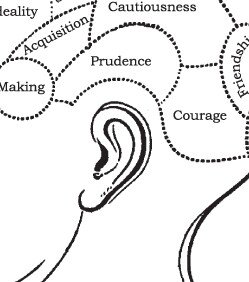 “Did you hear what I just said?” my wife asked me as I was busy doing the chores this past weekend. Fessing up, I admitted that I heard her but wasn’t really listening. I think it had something to do with the dripping bathroom faucet.
“Did you hear what I just said?” my wife asked me as I was busy doing the chores this past weekend. Fessing up, I admitted that I heard her but wasn’t really listening. I think it had something to do with the dripping bathroom faucet.
There really is a difference between “listening” and “hearing” as my wife occasionally reminds me. Hearing is passive and requires no effort, while listening, on the other hand, requires focus, attention and concentration. So with that as the backdrop, as a marketer, “Are you merely “hearing” your customers or are you “listening” to them?
In today’s world, we’re all stretched for time and the need to get done everything that needs to be done. But too many marketers are becoming so technology-addicted to their iPhones and email that they forget to listen the old-fashioned way to what their customers are saying and learning what it is that they want. They’re hardly even asking them. Attention spans have compressed to seconds, and face-to-face conversations (where body language plays a big part) are avoided in favor of texting and anonymous Internet surveys. It shouldn’t surprise you then that a Harris survey found that about 25% of all Internet users think it’s okay to be “plugged in” during their honeymoon, and just under 10% think it’s alright to surf the web during religious services. Do you really think that any of these people are taking the time to listen to their customers? Hardly.
So how do you know what your customers want? One of the most common answers I hear is, “Because they told us….” Yet, for me anyway, this answer only calls for more questions. Who? When? What did they tell you? How did they tell you – online? in person? Are you sure you really understood what they were telling you? Have their wants changed?
Think about this: if understanding what your customers want is the foundation of your marketing strategy, listening to customers is going to require more than a one-time investment in classic market research tools like focus groups and customer surveys. (Can I get an Amen on that?)
It’s no big secret that the markets in which you compete are evolving. Customer preferences and wants are continually changing. New competitors are showing up. But the one constant is your customers are talking. The key to truly understanding what they want is continual engagement – through social media, one-on-one interactions, and even sales calls. Getting in front of your customers and engaging them in conversations should be a required part of every marketer’s job – from the CMO down to the marketing specialist. And this applies to both B2B and B2C companies.
Ever wonder what causes customers to flock to one brand while remaining coldly indifferent to another—even when the offerings of the companies in question aren’t substantially different? Well, my experience working with varied sized organizations in all sorts of industries says that the single most important factor that separates the good companies from the great companies is the ability to listen to their customers. Great companies are maniacal about listening and differentiate meaning from the information given. In other words, they’re doing more than hearing what their customers are saying. They’re spending quality time listening. And they’re deriving their direction from what their customers are saying.
On that note, with social media being what it is, here are a couple of things to consider to help bring home the point of how important listening really is: Almost 50% of consumers want businesses to listen to them to improve their products while 60% of consumers want businesses to respond to their complaints. And, 66% of consumers across age groups want companies to respond to online comments on social media platforms.
Here are 5 quick tips on listening to your customers, and please, share this with your staff:
Now that all said, it’s also important to understand that not all customer comments are of equal importance and listening to them without some discrimination can be dangerous. Sure, they provide valuable feedback, advice and criticism, but the stuff some customers tell you can be distracting, unfocused, self-serving and a waste of time. You can’t please everyone and you can’t meet the needs of all your customers. This is when “hearing” them is a better course of action.
At the end of the day, if you don’t care, or can’t convince your customers that you listen, you can bet they will find a competitor who does. Successful businesses walk the walk and listen to the talk,
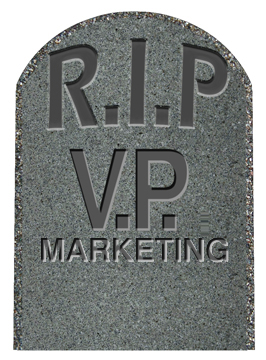 The life of a hummingbird rarely exceeds four years. The life expectancy of a Marketing Director (or CMO or VP of Sales & Marketing) at any given company is even less than that. The typical tenure these days is a little more than 3 years and this is up from about 26 months in 2004. In fact, as you stroll through the offices at many companies, it’s an easy bet which executive is a dead man (or woman) walking: the Marketing Director.
The life of a hummingbird rarely exceeds four years. The life expectancy of a Marketing Director (or CMO or VP of Sales & Marketing) at any given company is even less than that. The typical tenure these days is a little more than 3 years and this is up from about 26 months in 2004. In fact, as you stroll through the offices at many companies, it’s an easy bet which executive is a dead man (or woman) walking: the Marketing Director.
What are some of the reasons causing such a short tenure? What are some things a Marketing Director can do to be successful? How much of that is on the company and how much is brought on by the individual?
Ok, so how much of this is do you see or experience in the world that you live in? If you’re like the vast majority of Marketing Directors in this country, you see any of these issues popping up on a fairly regular basis. Here are a few things to consider in order to make sure you’re not having to call your executive recruiter anytime soon.
While the marketing landscape changes so quickly, the good news is that a Marketing Director can succeed in the face of headwinds no matter which way he/she faces. It may be more challenging than it should be, but stand true to your brand, be current and always in the know, and be bold enough to make a difference….otherwise, chances are, you might be dusting off that resume.
We had a client call last week telling us that she had received a letter from someone stating how much they were put off by an ad we were running. She was wondering if we should hold off running that ad and instead run another one we had produced. My response was “Heck no. I’m thrilled that someone felt that way. I hope we get a few more letters.” Why would I say that, right?
You see, your company, like 99.9% (there’s always that oddball out there) wants to be loved. You want adoring customers, enthusiastic vendors, committed partners, etc. Yet in reality, few companies are really appreciated. In fact, most companies and marketing messages are tolerated at best, and at worst, ignored. And do you know why? It’s because most company messaging is too forgettable and too dull to spark any type of reaction.
If you want your company to have passionate customers, dedicated partners, etc., you must first inspire strong responses. Only then can you convince people to love your company and become raving fans of your brand. But here’s the kicker: as you attract fans, you’re also bound to get the critics, or “Haters.” As we learned in physics: Every action creates an equal and opposite reaction. These Haters are the ones that write nasty letters or post negative comments on sites like Yelp or Angie’s list. That said, here’s something which might also cause you to recoil a bit. Experience has taught me that it’s OK to have some not like your brand (not a lot, of course). Yup, you heard me right. In fact, having a few critics is essential. The undeniable reality is that if you’re not eliciting a negative response from someone somewhere, then you’re probably not that fascinating to anyone. No one remembers lukewarm!
Fresh, imaginative, and original ideas come across as unfamiliar, even uncomfortable, which means that not everyone will like it. But unfortunately, most companies spend too much time worrying over damage control for the Haters that they never get up the nerve to be exceptional in the first place. In short, Haters are the price one pays for being special. Apple has Haters. Starbucks has Haters. Accept their presence but do not let them stop you from moving forward.
On the other hand you have the advocates, evangelists, loyalist…the Lovers. They don’t just buy your product or service, they also accept price increases and forgive occasional “issues.” When your product is sold out in one store, they’ll drive to another store to find it. When the competition tries to appeal to them with an incentive, they stay loyal. Lovers also do your marketing work for you — for free. They write nice things in online reviews, and even occasionally re-post your content online. In every aspect of your company, Lovers will reward you with new business and higher sales. They’re not just buying your products for price or utility.
So you now have the Lovers on the left and the Haters on the right and between them you have a set of customers who give you little loyalty or value. Let’s call this group the “Lukewarmers”. Maybe a good way of describing this group is like that friend of yours that would come over to watch a game but as soon as the beer ran out…so would he. Kind of like a friend…but not really. In the same way, these indifferent customers make a purchase here and there but don’t add much of anything else.
The Lukewarmers also have a really bad habit of not caring. They won’t buy your product unless it’s the cheapest or most convenient option which means they’re only buying you until a cheaper or more convenient alternative comes around. So in addition to not being loyal, they’re also expensive to maintain because you’re spending money to get them as customers and they never really pay out over multiple purchases.
In today’s marketplace, this middle ground is death!! Not caring is not buying. Not caring is inaction. The Lukewarmers leave for just the smallest of reasons. So how do you get people to quit being Lukewarmers and start actively choosing you and your brand?
Simply put, if your company wants to influence purchase decisions, you need to provoke strong and immediate emotional reactions so that people bond with your brand or company. The goal isn’t to create, or even stay away from controversy, but to avoid creating legions of people who simply don’t care.
The world is not changed by people who sort of care or don’t care at all. Stop focusing on the Lukewarmer. And don’t let the Haters keep you from your goals. Start accumulating the Lovers. And it all starts by having your marketing and advertising being original and captivating. There’s no middle ground here.
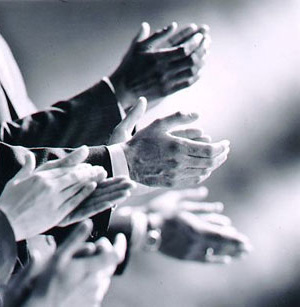 As businesspeople, we want to be acknowledged for the work we do, for the value we provide. Can you image doing your work year after year and rarely being told “Great Job! We need a lot more people like you!”? We all want to be recognized for how we go about our business but also that we have worth as individuals. It’s just a part of how we’re hard-wired as human beings.
As businesspeople, we want to be acknowledged for the work we do, for the value we provide. Can you image doing your work year after year and rarely being told “Great Job! We need a lot more people like you!”? We all want to be recognized for how we go about our business but also that we have worth as individuals. It’s just a part of how we’re hard-wired as human beings.
Well, the same thing holds true in having your company being praised by clients and customers. We all know how good it feels to be called out as a team or as a member of the team for making someone feel good about their association with your organization or department. Aside from personally feeling good about it, and depending on who is giving the “atta boy/girl”, people start walking around with a bounce in their step and overall team morale starts to increase. I know because last week our own firm received a couple of unanticipated and very flattering “great job” kudos from some clients that made us feel pretty darn good. Which got me to thinking, how might we want to let others know that our clients think we’re the “cat’s meow?” Because, probably like you, while we know it would be a good thing to do, we’re either sometimes to modest or we just don’t put the time into thinking how we could showcase these wonderful endorsements for the betterment of the firm.
In today’s world, the majority of prospective customers, both B2B and B2C, spend time researching online or through social media before they buy. They depend more than ever on word-of-mouth references from people who have used those brands or products – whether those references are in the form of anonymous reviews or client testimonials. (Think Angie’s List, Buzzillions or Yelp.) In fact, according to a the marketing group, ODM, about 90% of consumers trust the word of people they know and 70% of consumers trust the word of people they don’t know. Just look at how we shop online. We find what we’re looking for and one of the first things we do is check the customer rating number on the product. The second thing we typically do is read the actual customer reviews to see why someone gave that product 1 star and why others gave the same product 5. The point is, it wouldn’t hurt, regardless how large or small your organization, to make sure that people come across testimonials about your business to help establish trust and prove your credibility.
Ok, so if you’re running low on client testimonials, how do you get more? Well, here are a few thought starters:
Now, what to do with the client testimonials that you receive? Again, just some thoughts to get your marketing juices flowing:
If you have done your job well and earned satisfied customers, don’t let it end there. Let them speak up for you. Their words are worth their weight in gold. I know it. You know it. And your competitors know it. Oh, and before I forget “You’re doing a great job. We could use a lot more people like you.”
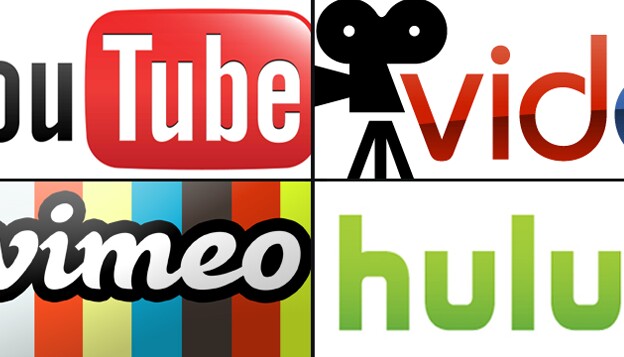 I saw a video over the holidays and it got the better of me so much so that I have to say something because these types of videos just need to stop being created by “marketers.”
I saw a video over the holidays and it got the better of me so much so that I have to say something because these types of videos just need to stop being created by “marketers.”
I’m talking about poorly conceived and produced online videos that we find on countless company websites and social media channels which are completely ineffectual. You know the kind of video I’m talking about: it starts off looking like it was homemade and it never gets better; the on-camera ‘talent’ has none; it doesn’t know when to end; there’s an information overload going on which leads to boredom; no clear understanding of who the audience is; and most importantly, the “WOW factor” is completely hidden or missing.
Unfortunately, this is exactly what some companies have haphazardly slapped together in the name of “meaningful content video.”
As we all know, online video content has just exploded over the past couple of years and it’s going to keep getting bigger in the foreseeable future. For example, did you know….
Yet we still have too many companies that create and post videos which are visual train-wrecks that unfortunately their customers and prospective customers will see. With that in mind, and so that the next video you develop has a chance to be all that it can be, let’s talk about what good videos have in common:
So whether you’re creating a testimonial, promotional, “how-to” or other type of video, the idea is to make sure that people find it interesting, worth spending the time to watch and that it leads to the desired next step. Repeated viewings of your video generally indicates a positive overall experience. Repeatedly having your video, or future videos, being ignored means, well, you know what that means.
“Be interesting, be enthusiastic…and don’t talk too much.” – Norman Vincent Peale
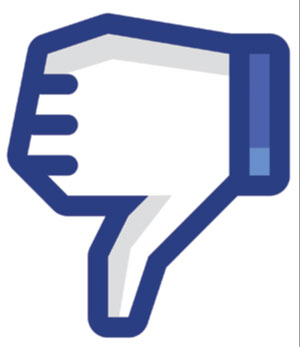 Like you, I’ve given companies, associations, causes, etc., permission to send me information on topics, product information and promotional offers. I knew going into this that some of these companies would be smart enough to know how to market online to their permission-based group and others wouldn’t have a clue. And I’ve been right on both counts.
Like you, I’ve given companies, associations, causes, etc., permission to send me information on topics, product information and promotional offers. I knew going into this that some of these companies would be smart enough to know how to market online to their permission-based group and others wouldn’t have a clue. And I’ve been right on both counts.
Permission-based marketing is now at the heart of relationships between companies and their customers and prospects. People opt-in to receive your emails, “Like” your company on Facebook, subscribe to your website’s RSS feed or your You Tube channel, or follow you on Twitter or LinkedIn. But having permission to market to someone isn’t a license to bombard them with marketing messages.
In fact, not knowing when to “zip it” is a classic marketing mistake that too many marketing people make. If marketing is about building relationships with customers, over-marketing is the best way to kill the relationship and send the customer or prospect heading for the door. Just recently, yesterday to be exact, I came across a really interesting study entitled “The Social Breakup” prepared by ExactTarget, a company that provides clear evidence of what happens to customer relationships when the marketer comes on too strong:
Guess the biggest reason people break up with companies? (Drum roll)…Too much marketing. The study showed that:
On that note, let me tell you a quick story about an industry association I did some freelance consulting for. Within their business specialty, they were the largest association in the country but people were increasingly not renewing their membership. After talking to the marketing department and executive management, two recommendations were made: 1) Cut in third the number of emails and direct mail pieces that were being sent out; 2) Find out why people were not renewing. Well, they didn’t like the first recommendation but did ‘humor’ me by taking my advice about doing the research. When the member survey report was finalized it said that the #1 reason for members not renewing was a direct result of their being really bothered by the sheer number of emails they were receiving. Guess what the association did? They disregarded the research and went back to doing what they were doing…no lie!
So, how do you know when you’re over-marketing and about to kill a customer or prospective relationship? It can be a fine line, but here are some principles to guide your marketing planning to avoid this costly error.
At the end of the day, people opt in because they want to hear from you. But if you disrespect the relationship by coming on too strong, customers and prospects will flee. Treating your customers and prospects well is common courtesy; treating their permission to market to them as a gift is even better…it’s a smart marketing strategy. Have a wonderful holiday season.